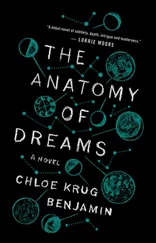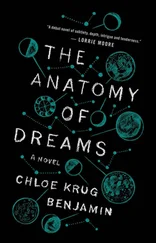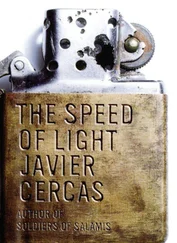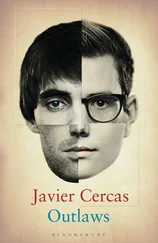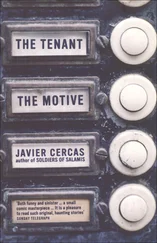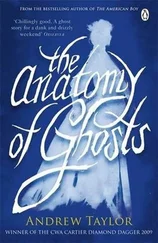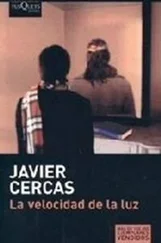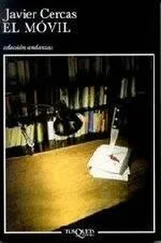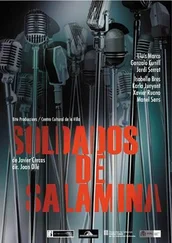Alfonso Guerra cited in Abella, Adolfo Suárez , p. 421.
‘. . it perhaps hastens the departure from the government of Deputy Prime Minister Abril Martorell. .’Relations between Suárez and Abril, however, had already deteriorated seriously by that point, and it’s likely that Suárez would soon have replaced his Deputy Prime Minister in any case; see Abella, Adolfo Suárez , pp. 432–434; Luis Herrero, Los que le llamábamos Adolfo , p. 196; and Julia Navarro, Nosotros, la transición , Madrid, Temas de Hoy, 1995, p. 17. Miguel Herrero de Miñón’s article is called ‘Sí, pero. .’, El País , 18.9.1980, reprinted in Memorias de estío , pp. 211–213.
‘. . in the middle of January the rumours that have been circulating with variable intensity since the summer proliferate. .’See for example articles by Fernando Reinlein and Abel Hernández, in Diario 16 and Ya respectively, published on 24 January. Reinlein writes: ‘The far-right offensive against the democratic institutions can back up a soft alternative regression [. .] A few days ago in political circles Diario 16 was told that two involutional alternatives were being assessed, one “soft” and the other “hard” [. .] According to these sources, the second hypothesis being ruled out as not very viable and unnecessary, the first may still be alive in the minds of many.’ Hernández is undoubtedly alluding to this latter alternative when he states that, ‘according to reliable sources’, the hypothesis of a government of national unity or salvation or ‘authority’ with a soldier in charge is being strongly considered (‘and, according to these sources, they have one already prepared’), a government formed basically of centrists and Socialists; according to Hernández, ‘it seems beyond doubt that senior military officers have held and are holding conversations with prominent Socialist leaders, as well as those from the centre and other parties’ with a view to a manoeuvre that, as the journalist describes it, seems to resemble the soft coup: ‘All the sources consulted insist they’re not talking about an actual military coup, but a very well-planned attempt to bring order to the situation precisely to avoid a military coup. According to prominent politicians who are involved in the conversations, the “operation” is inevitable and is practically finalized’ (Five days after this article Hernández reports again on the pressures to form a government of salvation in ‘La tregua’, Ya , 29.1.1981). That Suárez knew that General Armada was at the forefront of this operation is confirmed by, for example, Fernando Álvarez de Miranda — one of the Christian Democrat leaders in the UCD most critical of the Prime Minister — who held a long conversation with him around that time: ‘I told him again, finally, that, in my opinion, the situation was very bad, that the warning lights had been flashing for democracy for a while now and that, not having an absolute majority in Parliament, he should seek a coalition with the opposition party. He looked at me sadly, saying: “Yes, I know full well they all want my head and that’s the message even from the Socialists: a coalition government, led by a soldier — General Armada. I won’t bow to such pressure even if it means me leaving Moncloa in a coffin”’; Del ‘contubernio’ al consenso , p. 145. (Also in Paul Preston, Juan Carlos: A People’s King , p. 451.) As for the rumours of a no-confidence vote, years after his resignation Suárez said to Luis Herrero — a personal friend of his and son of his political mentor Fernando Herrero Tejedor — ‘I discovered there was a conspiracy at the heart of the parliamentary group to make me lose a no-confidence vote, the second in a few months, which the PSOE was about to table. Several UCD deputies had already stamped their signatures on it and the papers were kept in a safe’; Los que le llamábamos Adolfo , p. 213. Furthermore, Miguel Herrero de Miñón admits that they initiated procedures to table the no-confidence motion. See Prieto and Barbería, El enigma del Elefante , p. 116.
In 23-F. La conjura de los necios , pp. 190–191, Cernuda, Jáuregui and Menéndez give details of the meeting between Armada and Todman, according to them held at an estate belonging to Dr Ramón Castroviejo. There is reliable information about Todman and the American government and his relation to the coup in Calderón and Ruiz Platero, Algo más que el 23-F , pp. 203–209.
‘Even some Communist leaders [. .] Even the leaders of the main trade unions. .’On the first — specifically, on Ramón Tamames — see Santiago Carrillo, Memorias , p. 710; on the second — specifically, on Marcelino Camacho and Nicolás Redondo — see Santiago Segura and Julio Merino, Las vísperas del 23-F , pp. 266–267.
‘Panorama of Operations Under Way’ can be found in Prieto and Barbería, El enigma del Elefante , pp. 280–293; in Cernuda, Jáuregui and Menéndez, 23-F. La conjura de los necios , pp. 295–308; or in Pardo Zancada, 23-F. La pieza que falta , pp. 403–417.
‘Many who have investigated 23 February. .’See for example Fernández López, Diecisiete horas y media , pp. 214–218, and Prieto and Barbería, El enigma del Elefante , pp. 223–232. FootnoteSee Cernuda, Jáuregui and Menéndez, 23-F. La conjura de los necios , pp. 116–119.
‘. . The two notes from CESID. .’can be found in Juan Blanco, 23-F. Crónica fiel. . , pp. 527 and 529; the edict published by Milans del Bosch in Urbano, Con la venia. . , pp. 360–364, or Pardo Zancada, 23-F. La pieza que falta , pp. 416–417.
General Juste’s quote can be found in Pardo Zancada, 23-F. La pieza que falta , p. 81, whose description of events at the Brunete Armoured Division I essentially follow.
Part Two. A Golpista Confronts the Coup
Gutiérrez Mellado’s opinion on Franco’s coup d’état can be found in Al servicio de la Corona. Palabras de un militar , Madrid, Ibérica Europea de Ediciones, 1981, p. 254.
‘A historiographical cliché. .’On the question of the so-called ‘pact of forgetting’, exhaustively discussed in recent years, see two indispensable articles by Santos Juliá: ‘Echar al olvido. Memoria y amnistía en la transición’, Claves de Razón Práctica , no. 129, January — February 2003, pp. 14–24; and ‘El Francoismo: historia y memoria’, Claves de Razón Práctica , no. 159, January — February 2005, pp. 4–13. Max Weber, ‘Politics as a vocation’, Essays in Sociology , Ed. H.H. Gerth & C. Wright Mills, Oxford, Routledge, 1991, p. 118.
‘One is either in politics and leaves the military. .’Gutiérrez Mellado expressed the same idea in various ways. See Puell de la Villa, Manuel Gutiérrez Mellado , p. 160.
Carlos Iniesta Cano, ‘Una lección de honradez’, El Alcázar , 27.9.1976.
‘. . as long as it had its current statutes. .’We don’t know what Suárez’s exact wording was, but this is, more or less, what he attributed to himself in the interview with Sol Alameda: see Santos Juliá et al, eds., Memoria de la transición , p. 452 (‘My answer was that with the current statutes of the PCE its legalization was impossible’); or also his statements to Nativel Preciado, quoted by Nicolás Sartorius and Alberto Sabio, El final de la dictadura , p. 743. In Alameda’s interview Suárez states that he did not speak of legalization of the PCE on his own initiative, as has been claimed on many occasions (see for example what his Deputy Prime Minister of the time, Alfonso Osorio, says in Victoria Prego, Así se hizo la transición , pp. 536–537), but rather in reply to the officers’ questions. One credible version of what might have happened at that decisive meeting is in Fernández López, Diecisiete horas y media , pp. 17–20, which is where General Prada Canillas’ quote comes from. The quote from Suárez’s speech in the Francoist Cortes is from Prego, Así se hizo la transición , p. 477.
Читать дальше

